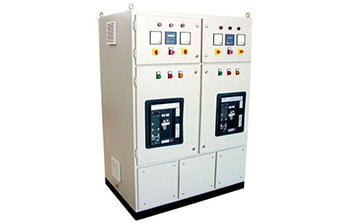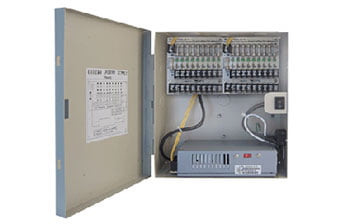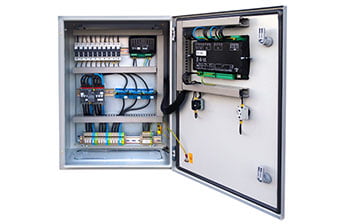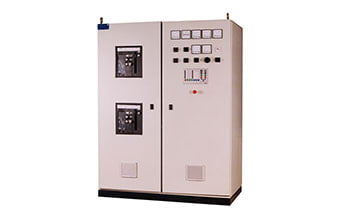Shed 06, Aber Warehouse
Dubai Investment Park 02,
PO Box: 414345 , Dubai.
United Arab Emirates.
Mobile: +971 50 2420957
Email: [email protected]

A distribution board (DB) is a device used to distribute electrical power to the various loads in a building. It typically includes circuit breakers, fuses, and other components used to control and distribute electrical power. DBS is commonly used in residential and commercial buildings to distribute power to various loads, such as lights, appliances, and outlets.DBS is designed to safely and efficiently distribute electrical power to different areas of a building or facility. They typically consist of a metal enclosure containing various electrical components, such as circuit breakers, fuses, and switches, used to control and distribute the electrical power.
DBS is typically installed in a central location within a building and distributes power to smaller areas or circuits through a network of electrical wires and cables. The panel may also include indicators, such as lights or gauges, to display the status of the electrical system or the panel itself.
In addition to distributing electrical power, DBs also protect against electrical hazards, such as overloading and short circuits. They may be equipped with safety features such as ground fault circuit interrupters (GFCIs) and overload protection to help prevent electrical shocks and damage to the electrical system.
The DB is equipped with a main breaker or main disconnect, a switch that can shut off all the electricity in the panel. The main breaker or disconnect is typically located at the panel’s top. It is used to isolate the panel from the main electrical supply in an emergency or when maintenance needs to be performed.
The DB also has several circuit breakers or fuses, protecting the panel’s circuits. Each circuit breaker or fuse is rated for a specific currency amount and designed to trip or blow if the current exceeds that rating. This helps to prevent electrical fires and other hazards.
The primary purpose of a distribution board is to divide the electrical power feed into subsidiary circuits and to provide a protective fuse or circuit breaker for each course. It helps ensure safe and efficient electricity distribution within a building or other structure.
A distribution board receives an electrical power feed from a primary supply source, such as a utility company or a generator. It then divides the power into smaller subsidiary circuits protected by fuses or circuit breakers. When a circuit becomes overloaded or experiences a fault, the fuse or circuit breaker will trip, interrupting the flow of electricity and protecting the course from damage.
Distribution boards come in a variety of forms, such as primary distribution boards, secondary distribution boards, and ultimate distribution boards. Sub-distribution or final distribution boards receive the direct electrical power feed from the main distribution boards and distribute it to them. Sub-distribution panels separate the power and distribute it within a building to particular sections or circuits. Last, main distribution board distribute power to individual outlets or appliances.
When making a decision, take into account several factors. A distribution board, including the size and type of building, the electrical load of the circuits, and any specific requirements or regulations. Working with a qualified electrician is vital to ensure that the distribution board is appropriately sized and installed to meet your particular needs.
The distribution board plays a pivotal role in managing and controlling the flow of electricity throughout a structure. It provides a means to protect electrical circuits from overloads and short circuits through the use of circuit breakers or fuses. Additionally, it allows for easy isolation of specific circuits for Electric panel’s maintenance or in the event of a fault, enhancing the overall safety and efficiency of the electrical system.
Yes, in many cases, an MDB can be upgraded or expanded to accommodate increased electrical loads. However, it’s crucial to consult with a qualified electrician or engineer to assess the existing system’s capacity and determine the feasibility of the upgrade. Any modifications should comply with local regulations, and safety measures should be prioritized to prevent potential hazards during the upgrade process.
When choosing a distribution board, it’s essential to consider the total load requirement, the number of circuits needed, and the type of circuits (lighting, power outlets, etc.). Additionally, factors like the available space, ease of installation, and compliance with local electrical codes and regulations should be taken into account to ensure the distribution board meets the specific requirements of the electrical system.
Regular maintenance is essential to ensure the proper functioning of distribution boards. Periodic inspections, tightening of connections, and testing of circuit protection devices should be part of the maintenance routine. It’s also important to follow manufacturer guidelines and schedule professional inspections to identify and address any potential issues before they escalate.














VOLTRONIX
Shed 06, Aber Warehouse
Dubai Investment Park 02,
PO Box: 414345 , Dubai.
United Arab Emirates.
Landline: +971 4 8240002
Mobile: +971 50 2420957
Email: [email protected]